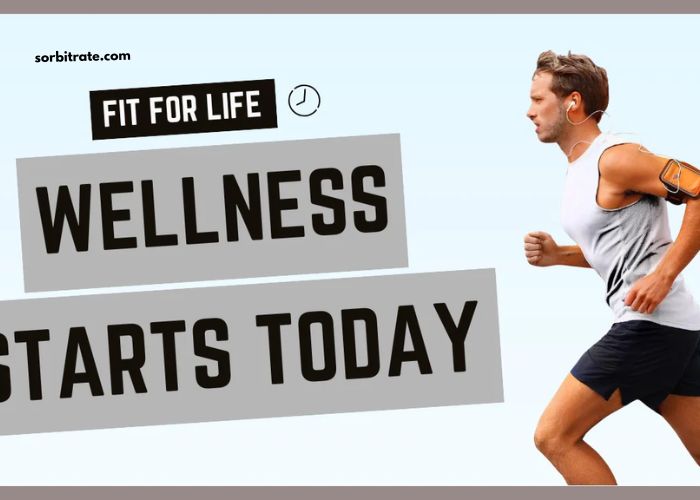In an age of quick-fix diets, trendy workouts, and social media-fueled fitness challenges, staying committed to health and wellness can feel overwhelming. Yet, the secret to lifelong fitness lies not in intensity or speed, but in sustainability. True fitness is not a destination but a way of living. This guide will help you uncover the practical strategies and mindset shifts that support lasting, meaningful results—making you truly fit for life.
Why Sustainable Fitness Habits Matter
Short-term gains can be motivating, but they often fade just as quickly. Many people fall into cycles of extreme dieting, punishing workouts, and burnout. Sustainable fitness habits, on the other hand, create a foundation of long-term health, improved mental well-being, and overall life satisfaction.
Key Benefits of Sustainable Fitness:
-
Consistent energy and mood regulation
-
Improved sleep quality
-
Reduced risk of chronic illnesses
-
Greater self-confidence
-
Enhanced longevity
The Core Principles of Lifelong Fitness
1. Start with Purpose, Not Pressure
Before committing to any fitness plan, identify why you want to be healthy. Is it to play with your children without getting tired? Reduce stress? Avoid medical complications? A purpose-driven approach increases intrinsic motivation, making habits easier to stick with.
Tip: Write down your “fitness why” and place it somewhere visible as a daily reminder.
2. Focus on Consistency, Not Perfection
You don’t have to run marathons or lift heavy weights daily. A 20-minute walk, a yoga session, or even stretching in your living room counts. Small, regular actions beat sporadic bursts of intense activity.
Remember: “Done” is better than “perfect.”
3. Build a Balanced Routine
Sustainability comes from variety and balance. Instead of doing only cardio or only strength training, mix activities that include:
-
Cardiovascular exercise (e.g., brisk walking, swimming)
-
Strength training (e.g., bodyweight workouts, resistance bands)
-
Flexibility & mobility (e.g., yoga, dynamic stretching)
-
Mind-body exercises (e.g., meditation, Pilates)
4. Make Movement Enjoyable
If you dread your workouts, you won’t stick with them. Explore different types of activities until you find what you enjoy—from hiking to dancing, rock climbing to martial arts.
Sustainable fitness thrives on joy, not obligation.
Creating Habits That Stick
1. Set SMART Goals
Use the SMART framework for goal-setting:
-
Specific
-
Measurable
-
Achievable
-
Relevant
-
Time-bound
For example, instead of saying “I want to get fit,” say “I will work out for 30 minutes, 3 times per week, for the next month.”
2. Anchor New Habits to Existing Routines
Pair your fitness habits with established routines:
-
After brushing your teeth, do 10 squats.
-
Walk for 15 minutes during your lunch break.
-
Stretch for 5 minutes before bed.
This technique, called habit stacking, makes it easier to incorporate new behaviors into your life.
3. Track Progress Mindfully
Keep a journal or use an app to track your workouts, mood, and energy levels. Avoid obsessing over the scale. Celebrate progress like improved stamina, better sleep, or more consistent routines.
Nutrition: The Fuel for Sustainability
Exercise alone won’t lead to sustainable health. Pair it with nutrient-dense, balanced eating.
Key Nutrition Habits:
-
Eat whole foods: fruits, vegetables, lean proteins, whole grains
-
Stay hydrated: aim for at least 8 glasses of water daily
-
Mindful eating: avoid distractions, eat slowly, listen to hunger cues
-
Balance, not restriction: enjoy treats occasionally without guilt
Pro Tip: Prep meals ahead to avoid last-minute unhealthy choices.
Mindset Shifts for Lifelong Success
1. Progress Over Perfection
Fitness is a journey, not a checklist. Some weeks will be better than others. That’s normal. The key is to keep showing up.
2. Self-Compassion Over Self-Criticism
Treat yourself like you would a friend. If you miss a workout or indulge more than planned, don’t spiral into guilt. Acknowledge it and move forward.
3. Embrace Identity-Based Habits
Rather than focusing only on goals (I want to lose 10 pounds), focus on identity (I am a person who prioritizes health). This mindset shift fosters lasting behavior change.
Staying Accountable
Accountability increases your chances of maintaining healthy habits. Consider:
-
Fitness buddies: work out with a friend
-
Online communities: join fitness forums or social media groups
-
Hire a coach: a trainer or health coach can provide structure and motivation
-
Bonus: Reward yourself for consistency—not results. A new pair of workout shoes or a massage can reinforce positive behaviors.
FAQs About Sustainable Fitness Habits
Q1: How long does it take to build a fitness habit?
Most research suggests it takes 21–66 days to build a new habit, depending on the complexity. The key is daily repetition and minimal resistance.
Q2: What if I don’t have time for long workouts?
Even 10-minute sessions can be effective. Focus on quality over quantity. High-Intensity Interval Training (HIIT) and bodyweight circuits are great time-efficient options.
Q3: How do I stay motivated when progress feels slow?
Shift your focus from results to routine. Celebrate showing up rather than just weight loss or muscle gain. Reflect on how your body feels, your sleep, and your energy.
Q4: Can I be fit without going to the gym?
Absolutely! Walking, cycling, home workouts, yoga, and sports are all valid. Fitness is not confined to gym walls.
Q5: What’s the best diet to support sustainable fitness?
The best diet is the one that’s nutrient-rich, flexible, and enjoyable. Avoid extremes. Aim for a variety of foods that nourish you while fitting your lifestyle.
Conclusion: Redefining Fitness for the Long Haul
Sustainable fitness isn’t about extremes. It’s about cultivating small, meaningful habits that align with your values and lifestyle. By embracing consistency, enjoying movement, nourishing your body, and shifting your mindset, you can become truly fit for life.
Fitness is not a phase—it’s a way of showing up for yourself every day. And once you unlock that secret, there’s no turning back.

